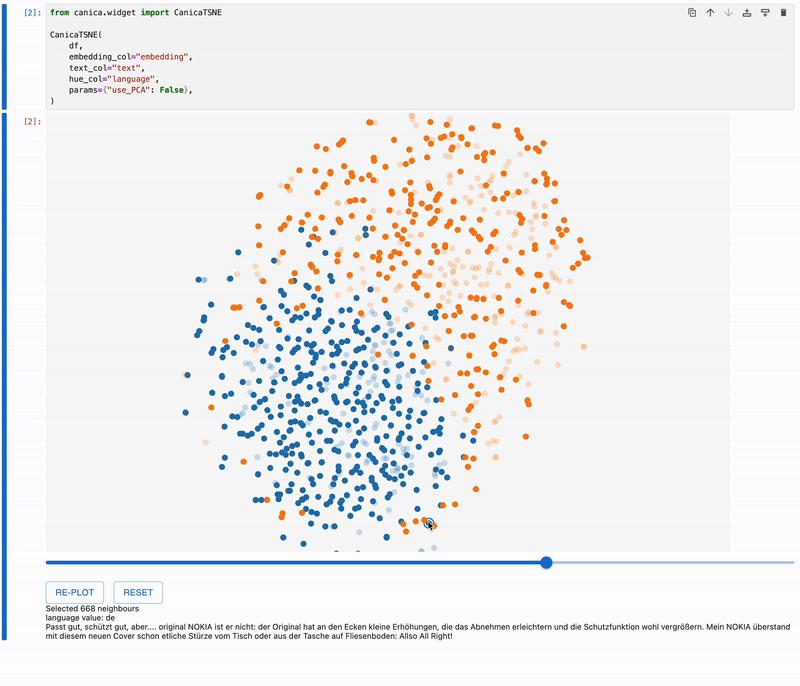canica is an interactive tool to visualize embeddings. Its main current goal is to explore text datasets, representing the input embeddings in a 2D tSNE plot.
Just
pip install canicaAnd start using the CanicaTSNE and CanicaUMAP class in your notebooks.
canica is designed to work mainly as a data exploration tool embedded as a widget inside of a jupyter notebook. These are the instructions to explore a dataset in a notebook (the tutorial notebook provides more information).
In a notebook, load a pandas DataFrame and make sure that at least one column contains the embeddings you want to plot. In a cell, run:
from canica.widget import CanicaTSNE
CanicaTSNE(df, embedding_col="embedding_col", text_col="text_col", hue_col="some_score")Where df is the pandas DataFrame, "embedding_col" is a column in df containing embeddings and hue_var is another column that will be represented using colours (currently it has to be a numerical column with values between 0 and 1).
You can also use CanicaUMAP instead of CanicaTSNE to use UMAP.
This will show the canica embedding explorer and will enable interactive exploration of your dataset. Have a look at the tutorial notebook to see it working.
We welcome contributions of all kinds. For more information on how to do it, we refer you to the CONTRIBUTING.md file.
